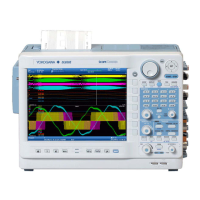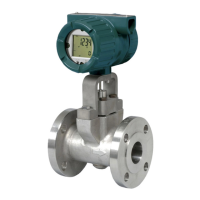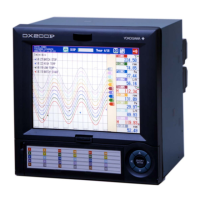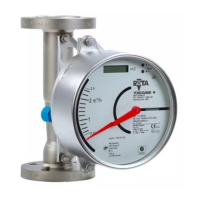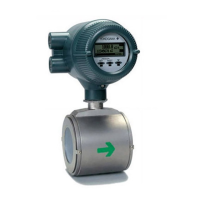2-31
IM 701210-05E
Explanation of Functions
2
2.4 Setting Waveform Acquisition Conditions and
Display Conditions
Record Length <Section 7.2>
The term “record length” normally refers to the number of data points acquired per
channel in the acquisition memory. “Displayed record length” refers to the number of
these data points that are actually displayed on the screen. The sample rate and record
length vary depending on the time axis setting. The DL750/DL750P allows you to select
the record length from the following: 1 kW, 2.5 kW, 5 kW, 10 kW, 25 kW, 50 kW, 100 kW,
250 kW, 500 kW, 1 MW, 2.5 MW, 5 MW, 10 MW, 25 MW, 50 MW, 100 MW, 250 MW,
500 MW, and 1 GW. (The maximum record length that can be selected varies
depending on the memory option.)
When the M3 option is installed, the entire data length of up to 1 GW (1 CH) can be
displayed instantaneously.
The length of time that can be recorded on 1 GW of memory is as follows:
Sample Rate In Seconds In Minutes In Hours In Days
10 MS/s 100 1.67 0.028 0.001
1 MS/s 600 10 0.167 0.007
100 kS/s 9000 150 2.5 0.10
10 kS/s 72000 1200 20 0.83
1 kS/s 864000 14400 240.0 10
200 S/s 2592000 43200 720.0 30
In most cases the displayed record length is identical to the (acquisition) record length.
For certain time-axis settings, however, the lengths become different. For details, see
appendix 1, “Relationship between the Time Axis Setting, Sample Rate and Record
Length.”
Acquisition Mode <Sections 7.3 and 7.4>
When storing sampled data in the acquisition memory, it is possible to perform
processing on data and display waveforms based on the processed data. The following
four types of data processing are available.
Normal Mode
In this mode, sampled data is stored in the acquisition memory without processing.
Averaging Mode
Averaging is a process in which waveforms are acquired repeatedly to obtain the
average of waveform data at the same time point (the same time in relation to the trigger
point).
The DL750/DL750P takes the linear or exponential average of the waveform data and
writes the results into the acquisition memory. The averaged data is then used to
generate the display. You can set the attenuation constant to a value between 2 and
256 (in 2
n
steps), and the averaging count to a value between 2 and 65536.
An= {(N-1)A
n-1
+X
n
}
1
N
Exponential averaging (when set to infinite)
A
N
=
N
Simple average (when set to 2 to 65536)
N
n=1
Σ X
n
An: nth averaged value
Xn: nth measured value
N: Attenuation constant (2 to 256, 2
n
steps)
Xn: nth measured value
N: Average count
(acquisition count, 2
n
steps)
The averaging process is useful in eliminating random noise.
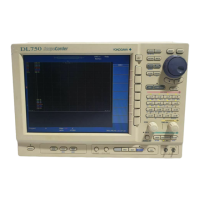
